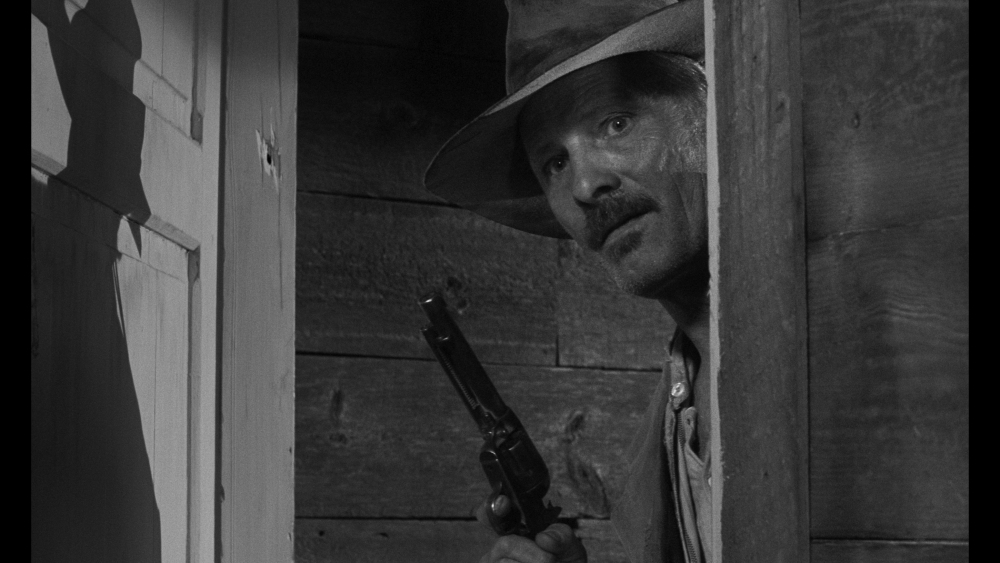‘Eureka’ Review: Viggo Mortensen Vanishes in Lisandro Alonso’s Puzzle
By the brazenly esoteric standards of Argentine director Lisandro Alonso, his last feature “Jauja” was virtually a concession to the mainstream. A lushly shot 19th-century historical drama led by Viggo Mortensen, it was — until a typically disorienting coda — close to linear in its colonialist-quest narrative, even as it moved in slow, ever-widening circles, and duly became Alonso’s most widely released film to date. Nine years later (the longest gap yet in a career taken at his own pace), Alonso’s follow-up “Eureka” playfully appears to mock whatever tentative gestures “Jauja” made toward accessibility: A glisteningly opaque meditation on Indigenous living that refracts viewers’ interpretations as it repeatedly switches gear, focus, locus and story, it’s a film built to frustrate those who don’t succumb to its oneiric spell, not that it especially imparts its secrets to those who do.
Eagerly awaited by Alonso’s patient faithful, “Eureka” was widely expected to mark the director’s debut in Competition at Cannes, only to bow instead in the festival’s auteur-heavy but non-competitive Cannes Premiere section. That decision may be indicative of the challenges posed by the 146-minute film even to discerning arthouse audiences, but “Eureka” — never an abrasive watch, even at its most elusive, rich as it is in visual and ambient pleasures — should still easily find a home with experimentally-inclined distributors.
For its first 20-odd minutes, however, “Eureka” promises a very different film altogether: a larkish, even hokey sendup of “Jauja’s” neo-western undertones, made overt and gleefully high-kitsch. On an unidentified, boulder-strewn coastline, a Native American elder offers a ritual chant, before the camera drifts — seemingly far inland — to a generic desert wasteland where squinting gunman Murphy (Mortensen) hitches a wagon ride with a surly nun to a lawless frontier town, where slain bodies line the streets and the living boozily await a similar fate. Murphy is on a revenge mission of some description, though few specifics emerge in his cryptic face-to-face with apparent town leader El Coronel (Chiara Mastroianni).
Even working in a mode of B-movie pastiche — and a devoted one, with scuffed monochrome lensing in a boxy frame curbed by the distinctive rounded corners that marked “Jauja’s” images — Alonso’s storytelling remains defiantly vague. But this introductory passage, with its grisly shootouts and Mortensen’s gruff, deadpan posturing, is a romping hayride ahead of the radical, quasi-Lynchian pivot that comes next. Our hero makes an abrupt exit and the frame turns to full color, as the film we’ve been watching is revealed to be an old western playing, ignored, on a TV set in the present-day home of Alaina (Alaina Clifford), a Native American cop in the Pine Ridge Reservation. What ensues, as we follow Alaina on her eventful but meandering nightly patrol, is a negative of what precedes, foregrounding the Indigenous lives invisibly trampled in the Hollywood-style genre outing, with law and order quietly asserted where chaos reigned.
That Alaina is nonetheless exerting the terms of white authority on her people goes unremarked-upon but not unnoticed. The prevailing poverty and desperation of the local Sioux population in made plain on her rounds, even before an improbably visiting French actor (Mastroianni again) with car trouble makes a gauche comment on the area’s high youth suicide rate. Alaina’s niece Sadie (Sadie Lapointe), a socially conscious basketball coach, seems to be an emblem of next-generation hope, but she too is weary of this life, and with the help of her grandfather — and, perhaps, a majestic, spiritually freighted marabou stork — seeks a flight to another.
Cue the film’s next reality shift, planting us amidst an Indigenous Brazilian tribe in the Amazon basin, where natives read each other’s dreams and forage for gold — as yet unencumbered by the colonizing influence at play in the film’s preceding phases. (“Acts” or “chapters” feel entirely too literal for the porous structure conjured by Alonso and editor Gonzalo del Val.) Alonso is no more at pains to assert a political message onto this hazy duel between social unrest and interior serenity than he is any clear sense of temporal order, and at nearly two-and-a-half hours, his predilection for ellipsis and sensory guidance is perhaps stretched thinner than in his previous features. But “Eureka” still bristles with agile ideas and inventive image-making courtesy of DPs Timo Salminen (a Kaurismäki regular) and Mauro Herce Mira, its elasticity of form and narrative perhaps alluding to a history forever repeating and doubling back onto itself. Even that reading, however, is a risk in a film that aims to tease, its very title taunting us with the promise of a revelation that never comes.

